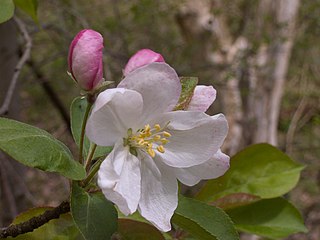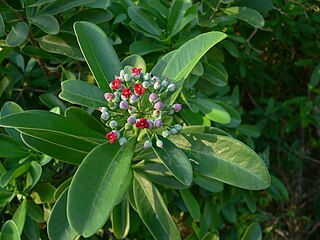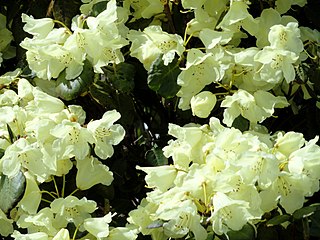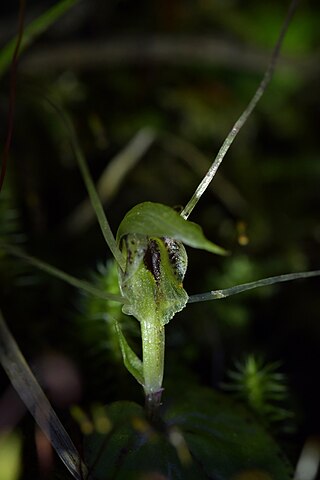Root descending, tapering, having short, lateral, branching fibres, annual. Stem erect, slender, very slightly compressed, smooth and shining, slightly flexuose, branched; branches suberect, resembling the stem. Leaves 3-nerved, central nerve keeled behind, glabrous, shining, somewhat succulent, quite entire, sessile and stem clasping, the lower (3½ inches long, ¾ of an inch broad) ovato-oblong, with a short central point, the upper ovato-acuminate, and gradually becoming smaller towards the flowers. Flowers radiate, terminal or axillary. Peduncles (3-4 inches) long, filiform, and resembling the branches, which, indeed, they should perhaps be considered, as they have distantly scattered along them abortive flower-buds, each covered with an inconspicuous leaf resembling a bractea. Anthodium ovate, imbricated, dry, membranous, shining, greenish, when withered pale brown; scales ovate, entire, having a distinct middle rib occasionally projecting at the apex in form of a little mucro, on rough footstalks, in the inner scales as long as themselves, but shorter in the outer, which are loose, and extended a little way on the peduncle. Receptacle naked, tubercled. Florets of the disk (nearly ¾ of an inch long) hermaphrodite, rose-coloured, especially at their apices, divaricated, and projecting outwards between the tubes of the ray, regular, 5-cleft, segments spreading. Anther-tube included, bursting at its apex, and discharging white pollen; filaments nearly as long as the anthers, inserted into the corolla above the middle of the tube. Ray at first rose coloured, but soon fading to white, spreading, (1¼ inch across,) corollulae ligulate; tube (⅜ths of an inch long) filiform; limb equal in length to the tube, linear-oblong, cordate at the apex, bi-nerved. Seeds small, leaden coloured, lanceolate-oblong, dotted, slightly tomentose, having at the base an umbilicus, which is circular, white, slightly excavated, with prominent edges; many abortive. Pappus simple, rough, nearly equal, half the length of the tube of the ray, two-thirds of that of the disk. [2]
















